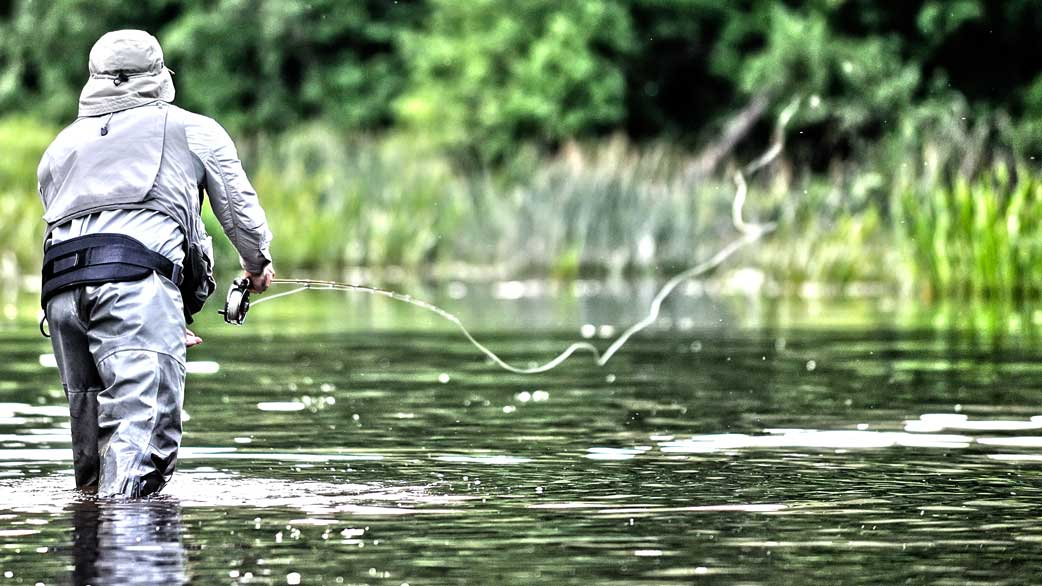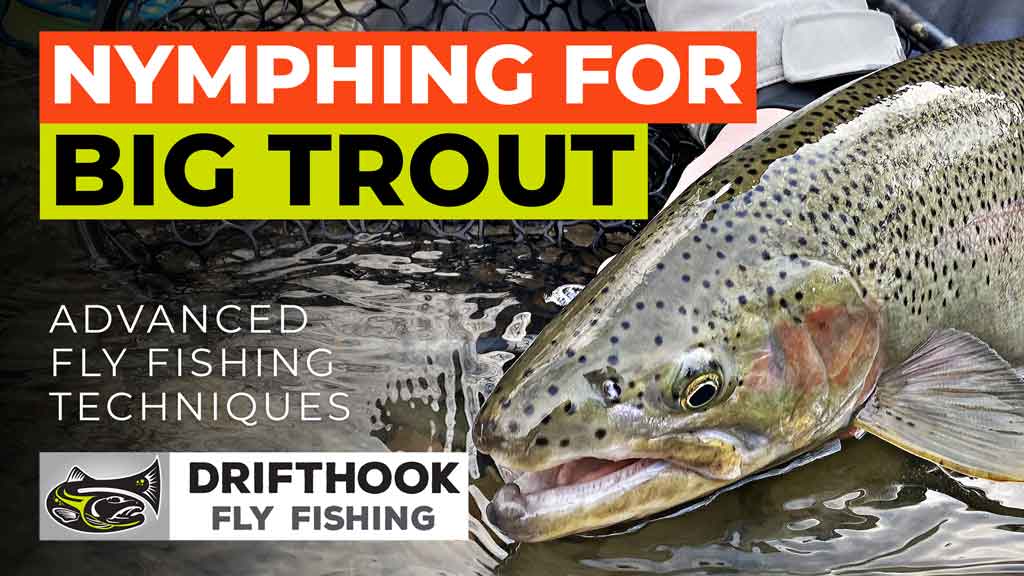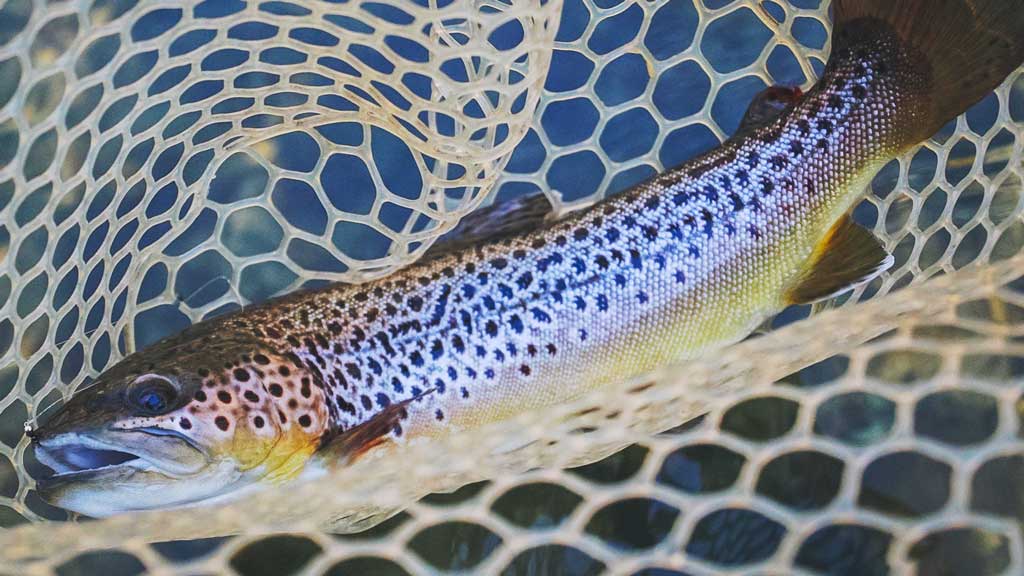Are you new to fly fishing? Do you want to learn how to fly fish for trout? In this post, you’ll learn how you can practice your fly casting without a fly and what to do to improve your technique.
As a whole you can practice casting without a fly. As a general rule when you're practicing your casting at home or on grass, you'll have your fly rod, fly line, and leader. This means that there is no need for the fly itself to practice fly casting. Instead, you'll focus on improving the accuracy of your casting.
Read on to find out more about the best ways to practice your fly casting and improve your technique. From working on your grip to your line control, we’re going to walk through everything you need to know in this post. We’ll also give you a little background on fly casting and show you how to rehearse at home.

What Is Fly Casting In Fly Fishing?
Before we dive into the information on how you can practice fly fishing at home or on the grass, you might want to know a little more about fly casting itself. What is it, and how can you make sure you nail it?
Fly casting is the process of getting your fly into the water, ready to be eaten up by trout. Casting your fly rod can seem like it's going to be challenging to do – or maybe more complicated than you first thought it would be. That's because it's an art form that you have to practice to get right.
To do this, you're going to need to look into the best fly fishing kits and find a fly rod that you like and feel comfortable with if you don't have one already. And while you will need fly fishing flies to fish at the lake, you won't need one when you practice.
How To Practice Fly Casting before You Even Get To The Water
To practice your fly casting, you need space. You don't have to use a lake for this, but you need an area to cast your line into and check where it's landing. If you have the room, you could do this inside. But ideally, you're going to want to do it outside in the yard or out in the open.
The more that you practice this, the better you're going to get at it. Just make sure that you have your fly rod, fly line, and leader, and you're good to go!

How To Fly Cast When Fly Fishing
Whether you know how to fly cast yet or not, understanding the basics can be good for you here. While you will need to get your flies for fly fishing at some stage, you don't have to worry about that right now. Instead, it'll help to know the anatomy of the perfect way to fly cast.
When you fly cast, you cast the line, and then the fly follows after it. To do this, you have to be sure that you're bending the rod and stroking it correctly too. It's important to make sure that you have your arm in the proper form here. It's easy to think that you should move in a windscreen wiper way, but that's not how to do it. It won't bend the rod. Instead, opt for a hammering movement.
The idea of hammering a nail means that you will produce a short movement that is curved. Your stroke will then propel your line and fly quickly to the target spot, and stops. Essentially, you're bending the rod (or loading it), then it'll unload and force the line forward. It's also been said before as seeing this as an apple on a stick if this analogy will relate more to you.
In reality, it can be a bit more complicated as the action isn't quite all you have to focus on. And it's not just a forward movement that you're doing. Instead, you've got to cast backward first to then cast forward, and you have to nail the backcast first to make sure the forward will work.
To help you here, looking back when you do the backcast can help you keep an eye on things. Or you could video your movements and see where you need to improve.
Can You Practice Fly Fishing On Grass?
As a whole, yes you can. Practicing your fly fishing on the grass is probably the best way to do it. You can practice both your forward and backcast separately when at home or out somewhere where there's grass.
To practice your forward cast, think about casting forward and seeing where it lands. Check if it's going straight or where it lands, so you need to look to improve. Then you can work on your backcast, casting at a side-arm angel both times. Ensure both are straight, and then you can join them up, beginning your forward cast when the line is straight out in the air.
This is just one of the ways that you can choose to do it, but there are also other methods that you can practice at home if you don’t have access to a big enough area of grass.

Ways To Practice Fly Casting At Home
You could also look to practice indoors. For this, you might want to pick up a practicaster which is a casting rod explicitly made for rehearsing. You can even opt to use a wool line here if you're worried about doing it indoors. Or, if you don't have one, then go with the first two sections of your rod.
You could also look to stay on your knees so that you've got more space above you. It sounds a little crazy, but you should then be able to practice with enough space and analyze your landing positions to see what changes you'll need to make.
It's also a good idea for you to think about setting out some targets to aim for, whether you're doing this indoors or outdoors on the grass. That way, you can start to practice your accuracy too, and note any progress you're making.
Focusing On Your Grip When Fly Casting
One of the main things that you’re going to want to focus on here is your grip. The most common type is for you to think about holding the rod with your thumb placed on top of the rod grip. This should be opposite your target. You’re going to want to make sure that you’re not squeezing so tightly. A loose grip that feels more natural and comfortable is much better.

Then, you can tighten your grip when you want the line to stop. If you grip too tightly, it can not only affect the result of your casting, but it can also mean that your arms and wrist can ache.
You'll also find that standing with your feet a shoulder-width apart will help. Then you can start to work on a few exercises to help you get the correct wrist movement, including casting low and side-arm to watch your casts and learn from them.
Nailing Your Line Control When Fly Casting
As you may know, in angling, you'll use a reel to get the line back. But when it comes to fly fishing, you need to retrieve the line with your hand (unless you've caught). So this is where the idea of practicing and improving your line control comes in.
It’s something that you might not even think about or see as that important, but it’s something that you really will want to practice as part of your fly fishing rehearsals. It’s a skill that you’ll want to nail.

To do this, you'll want to pinch the line right under where your index finger on your casting hand is and pull with your opposite hand. Just remember that you have to remove enough line for the distance you want to cast when you're casting. Drawing the line is so important, so be sure to practice this too.
Practice New Techniques Fly Casting
Now, it's important to realize that practicing your casting isn't all you can do to improve your game. You might want to take a look at your fly fishing kit and see what you need to work on. Maybe it would have been a good idea for you to tie a few knots. Having a go at the cinch knot or a triple surgeon's knot is a great place to start.
If you need help learning the basic fly fishing knots, check out our full article at this link.
But then also, if you’re looking to get ready to get out on the lake again sometime soon or for the first time, you might want to get some fly fishing flies and look to fill up a box full. It can be fun and help you to feel prepared too.
Now that you know that it is possible to practice fly casting without a fly, it’s time to get started. Follow the key points above and make sure that you practice, practice, practice. That way, when you next get out fly fishing, you’re casting will have improved.

About the Author
Matthew Bernhardt, a third-generation Coloradan, grew up at the forefront of the state’s fly-fishing revolution, enjoying time on the water, side by side with experienced guides and lifelong anglers.
By combining his passion for fly-fishing with input from other experienced fly-fishers and guides and his fine arts degree from Colorado State University, Matthew spent five years carefully developing the Drifthook Fly Fishing System, built to help every angler catch more trout.
When he’s not spending time with his wonderful family, you’ll find him out on the water catching MONSTER trout, and he anxiously looks forward to the day when his kids are old enough to join him there.





1 comment
Edward. Sinkovitz
This was my introduction to your site, and I was pleasantly surprised by the information available. I was introduced to Fly Fishing in my later years of life. I find it quite challenging but enjoyable. Thank you for your timely information and your site
Ed Sinkovitz
This was my introduction to your site, and I was pleasantly surprised by the information available. I was introduced to Fly Fishing in my later years of life. I find it quite challenging but enjoyable. Thank you for your timely information and your site
Ed Sinkovitz